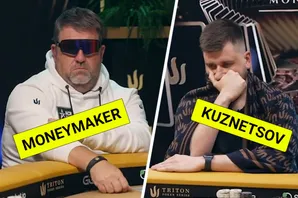Beginning with the poker boom of the mid-2000s, the trend at the World Series Of Poker has been to modify tournament structures to give more play to contestants. The Main Event, for example, now features a starting stack of 60,000 chips, rather than the 10,000 of two decades ago.
This ultra-deep starting stack tacitly acknowledges the importance of the Main Event to professional and recreational players alike. For many hobbyists, it is a once-in-a-lifetime opportunity to rub shoulders with the stars of the game, and a shot at life-changing money. Deep stacks and the slow two-hour blind structure increase the average time these players get to spend as part of the big show. And many of them relish the excitement of telling friends back home that they "bagged and tagged" and are moving on to Day 2.
But there are 88 bracelet events at this series, and many recreational players choose lower buy-ins than the $10k Main Event to hit the bucket-list item of playing in the series. Unfortunately, the structures in an increasing fraction of the smaller events are far less friendly.
Player pushback against WSOP
Ryan Laplante summarized the growing frustration with fast WSOP structures via Twitter:
"30min and 40min levels for $2500+ events is truly absurd. Having a few quicker structures is fine, but turning everything into high rake turbo really cheapens the brand."
A response from Nick Zautra clearly articulated why fast structures were a problem:
"I sat next to a fellow from Louisiana who flew out just for the $2500. His local league bought in four players (as opposed to one player for the Main) to give more people an opportunity. Every tournament on the WSOP schedule means something to someone. +1 for better structures."
The rapid blind levels in mid-stakes tournaments are a departure from previous years, when outside of some designated turbo tournaments, all Day 1s of such events were at least 60 minutes.
Poker.org spoke to Laplante to get his take on this structure question from the perspective of a high-volume professional. He told Poker.org:
"When playing WSOP events, for the most part, especially in midstakes+ ($1500+), pretty much every player I've spoken to agrees that we should have good structures. Some exceptions are reasonable. But having almost every event under 10k be a faster structure or turbo cheapens the brand and gives recreational players a worse experience."
The mouth blasts WSOP policy
The criticism comes hot on the heels of Mike Matusow lambasting WSOP for its extended late-registration policy. Matusow told Poker.org:
"These day two buy-ins are crazy. They’ve ruined tournament poker with this sht.”
Matusow was referring to WSOP giving players the ability to enter some tournaments as late as the start of Day 2, typically when over half the field has already busted.
Is there a connection between faster structures and extended late registration? Poker.org spoke to several players currently competing at the Rio, and they provided a common response. Aggressive blind structures bust players faster, whereas long late registration increases the number of entries. In an environment in which the number of dealers is limited, this fast-food approach simply gets players in and out the door quicker, thereby maximizing rake for a fixed staffing cost.
Featured image source: Twitter




























